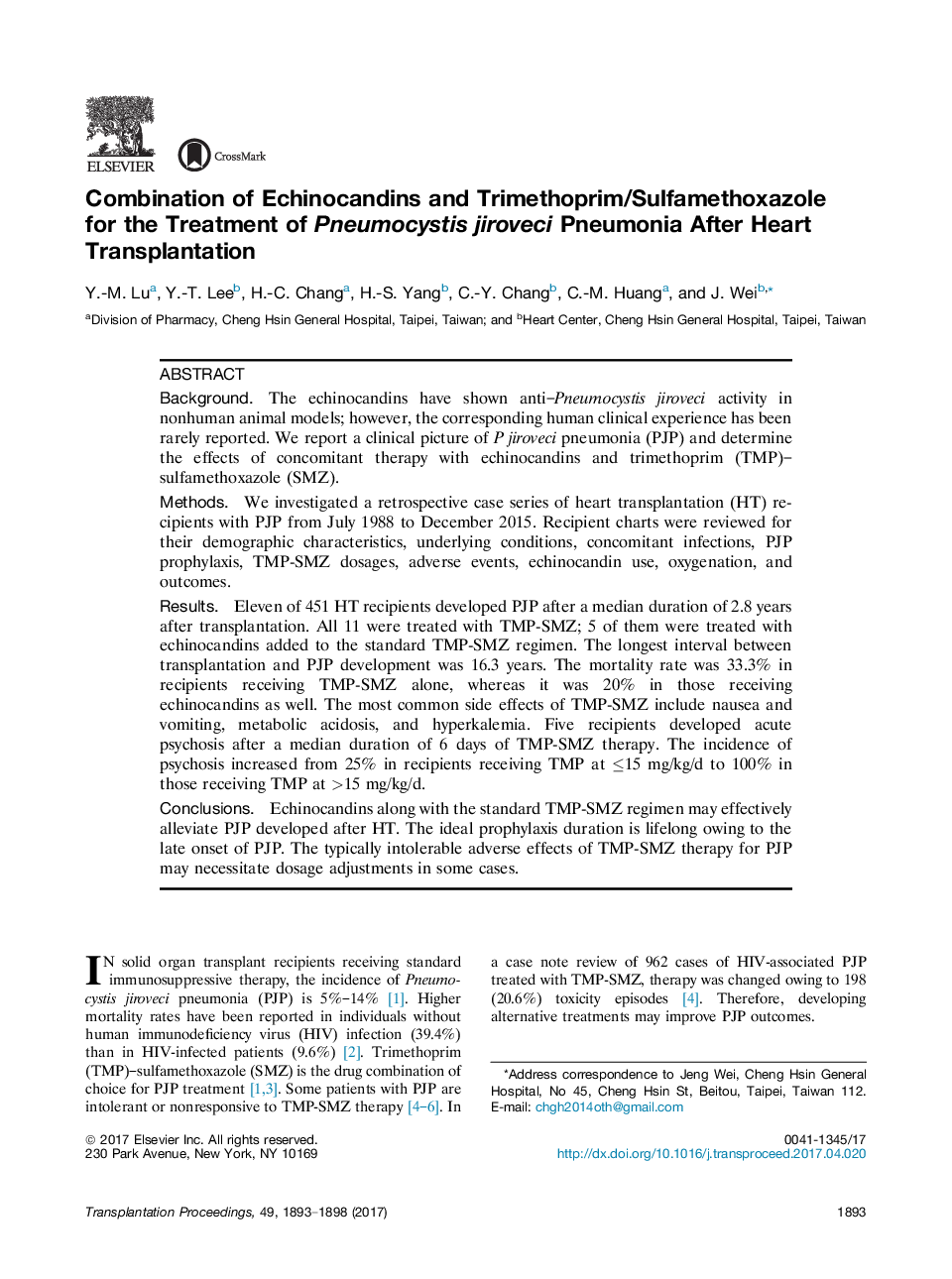| کد مقاله | کد نشریه | سال انتشار | مقاله انگلیسی | نسخه تمام متن |
|---|---|---|---|---|
| 5728649 | 1610669 | 2017 | 6 صفحه PDF | دانلود رایگان |
- Echinocandins along with TMP-SMZ may effectively alleviate PJP developed after HT.
- The ideal prophylaxis duration is lifelong owing to the late onset of PJP.
- The TMP-SMZ dosage should be adjusted to reduce the likelihood of severe toxicity.
BackgroundThe echinocandins have shown anti-Pneumocystis jiroveci activity in nonhuman animal models; however, the corresponding human clinical experience has been rarely reported. We report a clinical picture of P jiroveci pneumonia (PJP) and determine the effects of concomitant therapy with echinocandins and trimethoprim (TMP)-sulfamethoxazole (SMZ).MethodsWe investigated a retrospective case series of heart transplantation (HT) recipients with PJP from July 1988 to December 2015. Recipient charts were reviewed for their demographic characteristics, underlying conditions, concomitant infections, PJP prophylaxis, TMP-SMZ dosages, adverse events, echinocandin use, oxygenation, and outcomes.ResultsEleven of 451 HT recipients developed PJP after a median duration of 2.8 years after transplantation. All 11 were treated with TMP-SMZ; 5 of them were treated with echinocandins added to the standard TMP-SMZ regimen. The longest interval between transplantation and PJP development was 16.3 years. The mortality rate was 33.3% in recipients receiving TMP-SMZ alone, whereas it was 20% in those receiving echinocandins as well. The most common side effects of TMP-SMZ include nausea and vomiting, metabolic acidosis, and hyperkalemia. Five recipients developed acute psychosis after a median duration of 6 days of TMP-SMZ therapy. The incidence of psychosis increased from 25% in recipients receiving TMP at â¤15 mg/kg/d to 100% in those receiving TMP at >15 mg/kg/d.ConclusionsEchinocandins along with the standard TMP-SMZ regimen may effectively alleviate PJP developed after HT. The ideal prophylaxis duration is lifelong owing to the late onset of PJP. The typically intolerable adverse effects of TMP-SMZ therapy for PJP may necessitate dosage adjustments in some cases.
Journal: Transplantation Proceedings - Volume 49, Issue 8, October 2017, Pages 1893-1898
